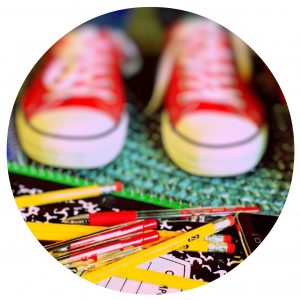Short on Portfolio Work for your Art School Application? No Problem.
If you think you want to apply to art school but have no appropriate work for your portfolio, don’t worry! It’s not too late.
A portfolio is a collection of one’s best creative work. But an art school portfolio is MUCH more. For college planning, it demonstrates how prepared you are for your personal mission. Developing the work needed to create your best portfolio allows you to connect the dots of where you’ve been, who you are now, and who you aspire to be.
When it comes to putting together your portfolio, you’ll need to have an inventory of projects that exceeds the required number. If 10-20 pieces are required, and you only have 10, it doesn’t allow you to choose your best work. By working on your art continuously, you’ll have a rich body of work to choose from that will best showcase your personal style.
Here are some suggestions for building up that body of work!

1. Create Space and Time for Your Art
Just as writers need a room of their own, so do artists. You need a dedicated space to create, preferably a space where you do not have to clean up or put away your works in progress. It doesn’t have to be a full-blown art studio. It can be a corner of a room, a nook, a space in the garage. If you feel comfortable enough to create, you’re in a good space.
You should also set aside time to work on your art. We know high school can be a seemingly endless list of assignments, practices, rehearsals, tests, and more. It can be very easy to put your art on the back burner. Schedule time for your work just as you would schedule time for everything else. If you want to go to art school, you’ll need to prioritize making art.
2. Pre-College Summer Programs
These programs can be a really good way for students to come away with several finished pieces and some in progress. Programs can be found at many colleges and can range from one week to two months.
Participating in pre-college summer programs can also be a good way to experience what it is like to be on campus in a college art program. In addition to building your portfolio, you’ll also get feedback from college faculty and meet like-minded students.
No list is comprehensive but here are some of my recommended pre-college programs.
3. Take As Many Art Classes as You Can
Take as many opportunities as you can to work and learn in both academics and art. A sequence of challenging high school classes on your transcript shows college your interest and commitment to both. See what your school offers, make use of their resources and you can build your body of work AND expand your repertoire.
If your school does not have many art classes, look for other local opportunities. After school programs are often available at quality art centers, open studios, parks and recreation departments, adult education, community centers like the YMCA and, of course, art museums.
4. Find Your Tribe
 Finding other artists, whether in person or online, can inspire, motivate, and connect you.
Finding other artists, whether in person or online, can inspire, motivate, and connect you.
You could start or join a club at school. We worked with a student who started a film club at school, providing a place for like-minded students to share their passions, develop techniques, and give and receive feedback from peers. The organizer demonstrated to film schools that she was a leader who was proactive and dedicated to her work.
Create your own group on the social media platform of your choice, where you and fellow artists can meet virtually to share your work and inspire each other.
Sign up to help other clubs/groups. If you’re interested in fashion or costume design, the theater department can always use your help. If you’re interested in graphic design, your services could be used to create flyers. The possibilities are endless. Think about who might need your skills and it could be a win-win.
5. Work With Us
If you’re still struggling to get started or are trying to figure out where to go next, we can offer you sound advice and help brainstorm projects. And, we’ll create a strategy with you for developing, editing and submitting an impressive portfolio that works for you.

